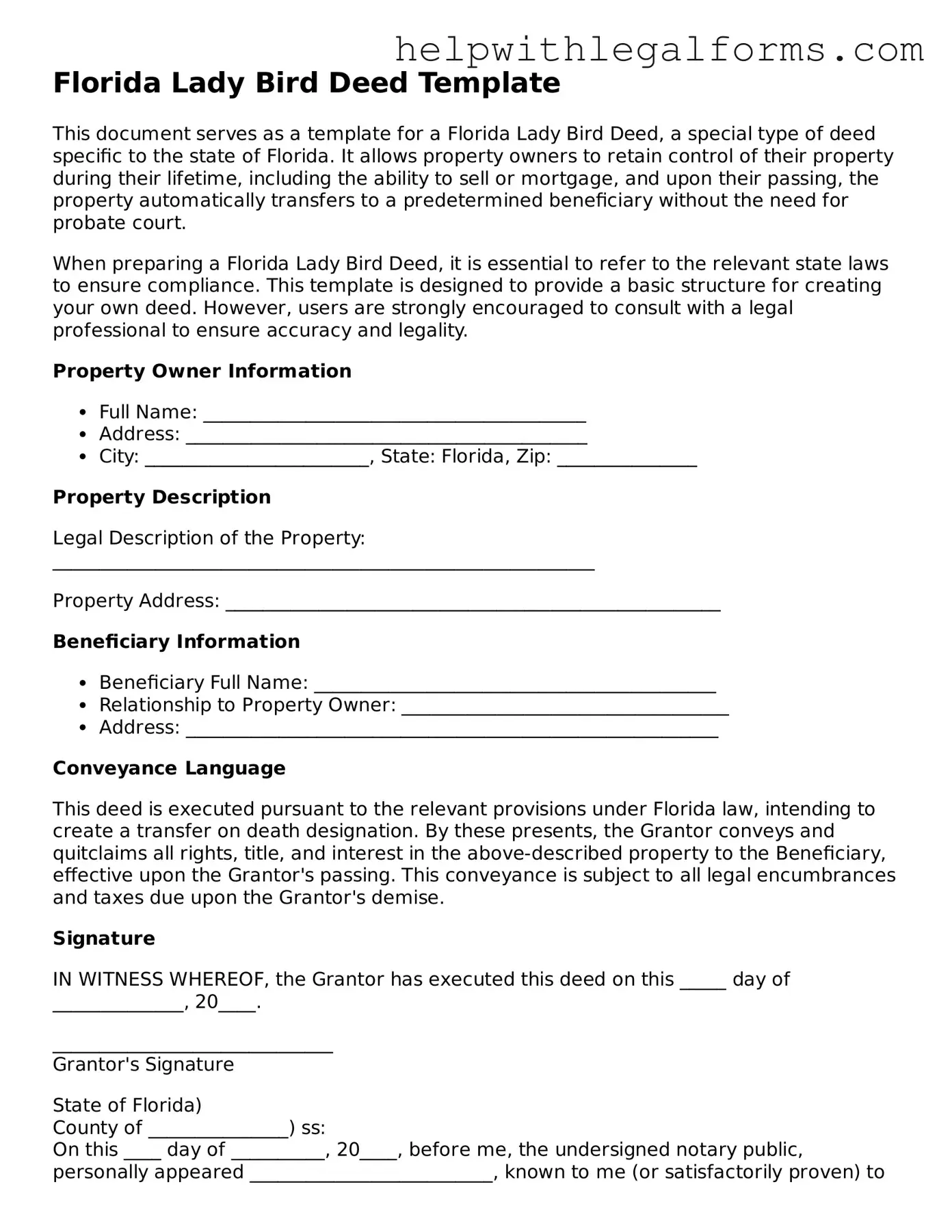Florida Lady Bird Deed Template
This document serves as a template for a Florida Lady Bird Deed, a special type of deed specific to the state of Florida. It allows property owners to retain control of their property during their lifetime, including the ability to sell or mortgage, and upon their passing, the property automatically transfers to a predetermined beneficiary without the need for probate court.
When preparing a Florida Lady Bird Deed, it is essential to refer to the relevant state laws to ensure compliance. This template is designed to provide a basic structure for creating your own deed. However, users are strongly encouraged to consult with a legal professional to ensure accuracy and legality.
Property Owner Information
- Full Name: _________________________________________
- Address: ___________________________________________
- City: ________________________, State: Florida, Zip: _______________
Property Description
Legal Description of the Property: __________________________________________________________
Property Address: _____________________________________________________
Beneficiary Information
- Beneficiary Full Name: ___________________________________________
- Relationship to Property Owner: ___________________________________
- Address: _________________________________________________________
Conveyance Language
This deed is executed pursuant to the relevant provisions under Florida law, intending to create a transfer on death designation. By these presents, the Grantor conveys and quitclaims all rights, title, and interest in the above-described property to the Beneficiary, effective upon the Grantor's passing. This conveyance is subject to all legal encumbrances and taxes due upon the Grantor's demise.
Signature
IN WITNESS WHEREOF, the Grantor has executed this deed on this _____ day of ______________, 20____.
______________________________
Grantor's Signature
State of Florida)
County of _______________) ss:
On this ____ day of __________, 20____, before me, the undersigned notary public, personally appeared __________________________, known to me (or satisfactorily proven) to be the person whose name is subscribed to the within instrument and acknowledged that he/she executed the same for the purposes therein contained. In witness whereof, I hereunto set my hand and official seal.
______________________________
Notary Public
My Commission Expires: ______________
Witnesses
As required by Florida law, this deed must be duly witnessed by two individuals. Witnesses must sign in the presence of the Grantor and each other.
- Witness #1 Name: _________________________________________________
- Address: _________________________________________________________
- Signature: ___________________________________ Date: ______________
- Witness #2 Name: _________________________________________________
- Address: _________________________________________________________
- Signature: ___________________________________ Date: ______________
